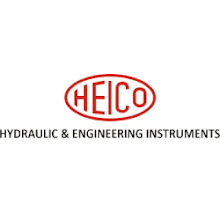Servo hydraulic systems are advanced hydraulic systems that use closed-loop control to achieve precise and accurate movements in industrial machinery. They consist of hydraulic actuators, servo valves, sensors, and controllers, which work together to maintain the desired position, velocity, or force of a load. Servo hydraulic systems are known for their high power density, quick response time, and ability to handle large loads. They are used in a wide range of applications, including aerospace, automotive, manufacturing, and testing equipment. However, they are more complex and expensive than other hydraulic systems, and require careful maintenance and tuning to ensure optimal performance.
Components of a servo hydraulic system
A servo hydraulic system typically consists of the following components:
Hydraulic actuator: This is a device that converts hydraulic energy into mechanical energy to produce a linear or rotary motion. It can be a cylinder or a motor, depending on the application.
Servo valve: This is a type of control valve that regulates the flow and pressure of the hydraulic fluid to the actuator. It receives signals from the controller to adjust the flow rate, direction, and pressure of the fluid.
Sensors: These are devices that detect the position, velocity, and force of the load being controlled. They provide feedback to the controller to adjust the output of the servo valve and maintain the desired parameters.
Controller: This is an electronic device that processes the input signals from the sensors and generates output signals to the servo valve. It can be a simple PID controller or a more advanced digital controller with adaptive algorithms.
Hydraulic power unit: This is a collection of components that generate, store, and distribute hydraulic fluid to the actuator and servo valve. It typically includes a pump, reservoir, filters, and cooling system.
Electrical power supply: This is a source of electrical power that drives the sensors, controller, and servo valve. It can be an AC or DC power supply, depending on the application.
Working principle of servo hydraulic systems
The working principle of servo hydraulic systems is based on closed-loop control, which uses feedback from sensors to adjust the output of a servo valve that regulates the flow and pressure of hydraulic fluid to an actuator. The main steps involved in the operation of a servo hydraulic system are as follows:
The sensor detects the position, velocity, or force of the load being driven by the hydraulic actuator and sends a feedback signal to the controller.
The controller processes the feedback signal and compares it to the desired value set by the operator or a pre-programmed control algorithm.
The controller generates an error signal that represents the difference between the actual and desired values, and sends it to the servo valve.
The servo valve adjusts the flow rate, direction, and pressure of hydraulic fluid to the actuator, based on the error signal from the controller.
The actuator converts the hydraulic energy into mechanical energy to produce a linear or rotary motion that drives the load.
The sensor detects the new position, velocity, or force of the load and sends a new feedback signal to the controller, starting the process over again.




0 Comments